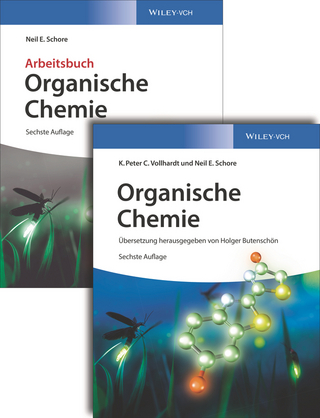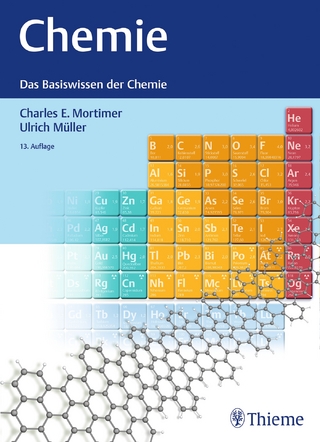
The Organic Chemist's Guide to Computation and Theory
Wiley-VCH GmbH (Verlag)
978-3-527-33908-2 (ISBN)
- Noch nicht erschienen (ca. Juni 2025)
- Versandkostenfrei innerhalb Deutschlands
- Auch auf Rechnung
- Verfügbarkeit in der Filiale vor Ort prüfen
- Artikel merken
Throughout the book the authors discuss case studies in order to illustrate key points and to emphasize the capabilities of computational chemistry to solve problems and questions posed by the experimental work. They also include a unique appendix on good practices in reporting computational results as well as commonly used notations and formats.
Aimed at facilitating dialog between theoreticians and experimentalists, this is a valuable guide for graduates and researchers working in the field of organic chemistry, computational chemistry, physical chemistry, and medicinal chemistry as well as materials science.
Fernando P. Cossio is a full professor of Organic Chemistry at the University of the Basque Country (UPV/EHU, Spain) and at the Donostia International Physics Center in San Sebastian (Spain). He studied Chemistry at the Universidad de Zaragoza (Spain) and received his Ph.D. at UPV/EHU in 1986 with Prof. C. Palomo. He there became Associate Professor in 1988 and Full Professor in 2002. He has been the Dean of the UPV/EHU Faculty of Chemistry, Vice-President for Research and International Relations at the same university (2001-2004), and President of the Executive Committee of Ikerbasque, the Basque Foundation for Science (2009). He has authored ca. 200 papers, books, and book chapters as well as 14 patents. His research interests include pericyclic reactions, C-C bond forming reactions, unusual species or reaction conditions, catalysis, and medicinal chemistry. Kendall N. Houk is the Saul Winstein Chair in Organic Chemistry at the University of California, Los Angeles (UCLA), since 2009. He received his Ph.D. at Harvard University, USA, working with Prof. R.B. Woodward. He taught at Louisiana State University and the University of Pittsburgh, USA, before moving to UCLA in 1986. From 1988-1990, he was Director of the Chemistry Division of the National Science Foundation. He was Chairman of the UCLA Department of Chemistry and Biochemistry from 1991-1994. He has won numerous awards, such as ACS Arthur C. Cope Scholar Award, the ACS James Flack Norris Award in Physical Organic Chemistry, the Schrodinger Meal of the World Association of Theoretical and Computational Chemists (WATOC), and the ACS Award for Computers in Chemical and Pharmaceutical Sciences. He has been elected to the American Academy of Arts and Sciences, the International Academy of Quantum Molecular Sciences, and the National Academy of Sciences. He has published nearly 1000 articles. His research group is involved in the development of rules to understand reactivity, computer modeling of complex organic reactions, and experimental tests of the predictions of theory.
1. THEORETICAL BASES FOR THE CALCULATION OF MOLECULAR PROPERTIES
1.1. The Time-independent Schrodinger Equation
1.2. Organic and Organometallic Molecules as Polyelectronic and Polynuclear Systems
1.3. Substituents and Functional Groups
1.4. Classical, Quantal and Hybrid Description of Organic Molecules
2. CALCULATING GEOMETRIES OF MOLECULES AND MACROMOLECULES
2.1. Cartesian and Internal Coordinates
2.2. Potential Energy Surfaces (Part I)
2.3. Time-dependent Phenomena
2.4. Excited States
2.5. Hybrid Methods for the Study of Complex Molecules
2.6. Computational Tools for the Study of Solvent Effects
3. CALCULATING SPECTROSCOPIC PROPERTIES OF ORGANIC AND ORGANOMETALLIC MOLECULES
3.1. Calculation of UV-visible Spectra
3.2. Calculation of IR Spectra
3.3. Calculation of NMR Spectra
3.4. Calculation of Chiroptic Properties
4. THEORETICAL ASSESSMENT OF THE REACTIVITY OF ORGANIC AND ORGANOMETALLIC MOLECULES
4.1. Connection between Traditional Reactivity Patterns and Theoretical Chemistry
4.2. Electron Density and Reactivity
4.3. Conceptual Density Functional Theory
4.4. Energy Partition-based Models
4.5. A Complementary View: Conceptual Valence Bond Theory
5. THEORETICAL ELUCIDATION OF REACTION MECHANISMS
5.1. Potential Energy Surfaces (Part II).
5.2. Computational Determination of Reaction Rates
5.3. Geometry Optimization
5.4. Concerted Mechanisms
5.5. Stepwise Mechanisms
5.6. Computational Tools for the Study of Photochemical Reactions
5.7. Two State Reactivity and Beyond
5.8. Theoretical Tools for the Study of Catalysis: Organic and Organometallic Catalysts
5.9. Theoretical Tools for the Study of Catalysis: Enzymes
6. THEORETICAL TOOLS FOR MATERIALS SCIENCE AND MEDICINAL CHEMISTRY
6.1. Predicting Electronic Properties of Organic Materials
6.2. Computational Prediction of Biological Responses
APPENDIX: GOOD PRACTICES IN COMPUTATIONAL CHEMISTRY
| Erscheinungsdatum | 29.10.2020 |
|---|---|
| Verlagsort | Berlin |
| Sprache | englisch |
| Themenwelt | Naturwissenschaften ► Chemie ► Organische Chemie |
| Naturwissenschaften ► Chemie ► Physikalische Chemie | |
| ISBN-10 | 3-527-33908-6 / 3527339086 |
| ISBN-13 | 978-3-527-33908-2 / 9783527339082 |
| Zustand | Neuware |
| Haben Sie eine Frage zum Produkt? |
aus dem Bereich


